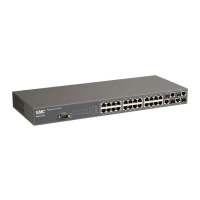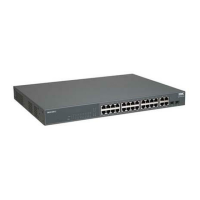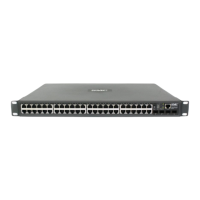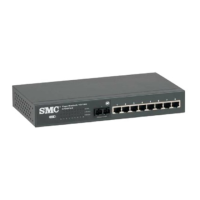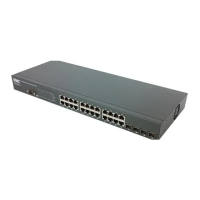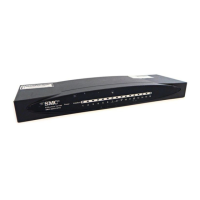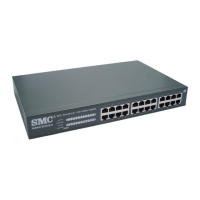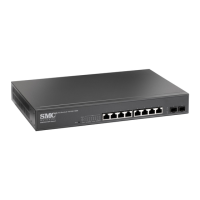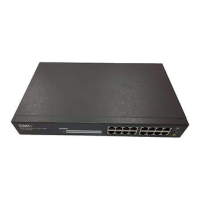C
OMMAND
L
INE
I
NTERFACE
4-92
delete
This command deletes a file or image.
Syntax
delete [unit:] filename
filename - Name of the configuration file or image name.
unit - Stack unit. (Range: 1-8)
Default Setting
None
Command Mode
Privileged Exec
Command Usage
• If the file type is used for system startup, then this file cannot be
deleted.
• “Factory_Default_Config.cfg” cannot be deleted.
• A colon (:) is required after the specified unit number.
Example
This example shows how to delete the test2.cfg configuration file from
flash memory for unit 1.
Related Commands
dir (4-92)
delete public-key (4-53)
dir
This command displays a list of files in flash memory.
Syntax
dir [unit:] {{boot-rom: | config: | opcode:} [:filename]}
The type of file or image to display includes:
Console#delete 1:test2.cfg
Console#
